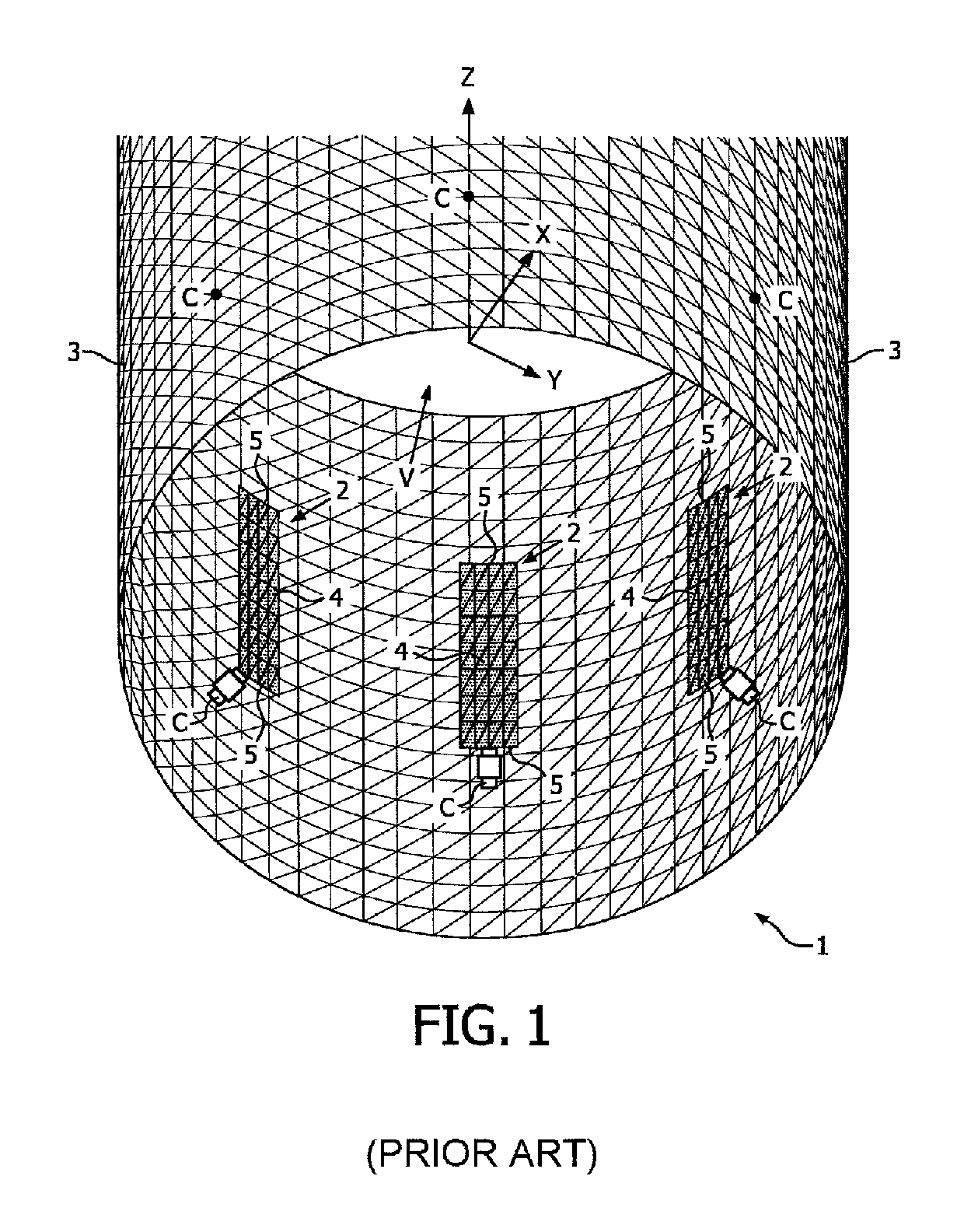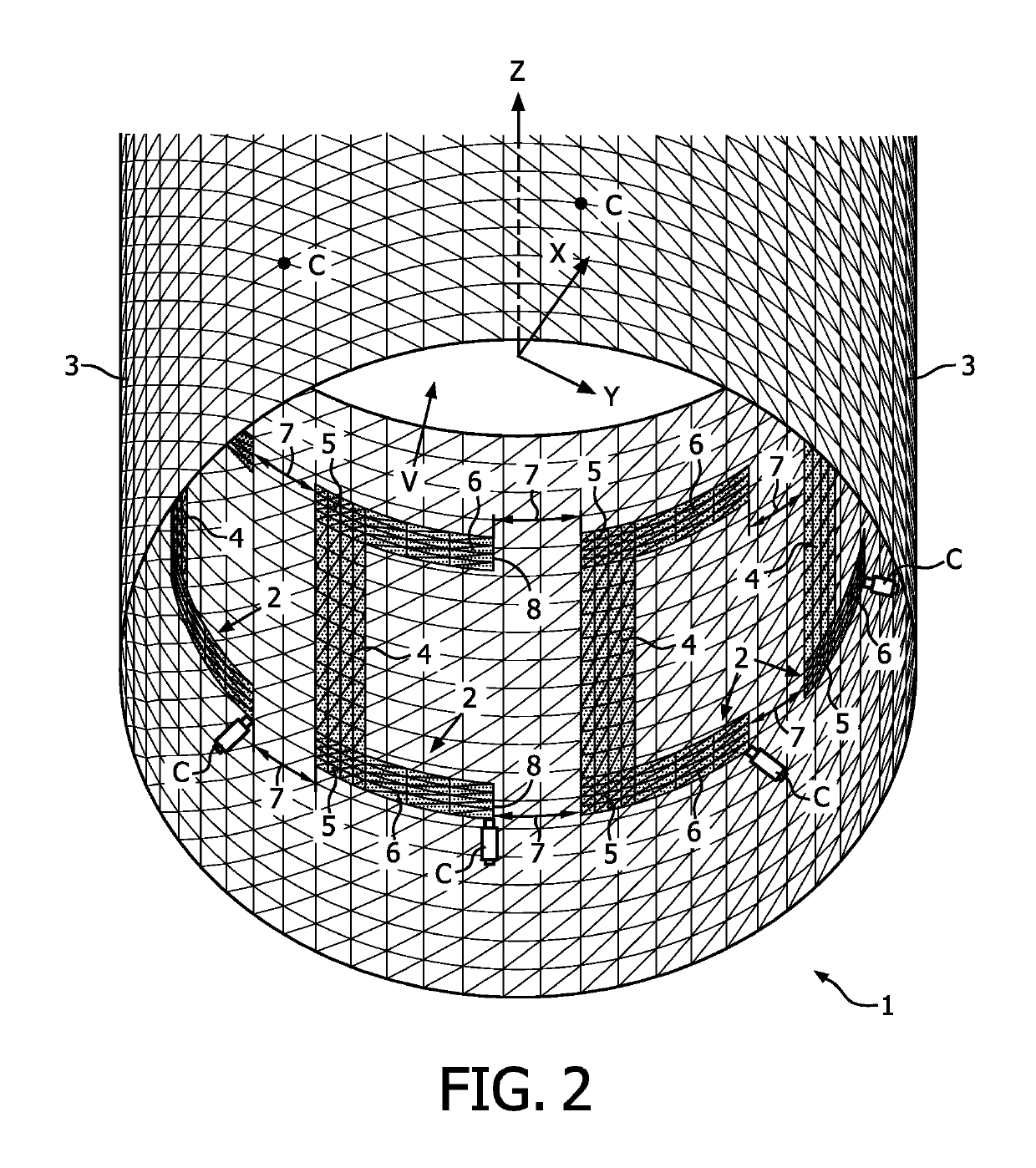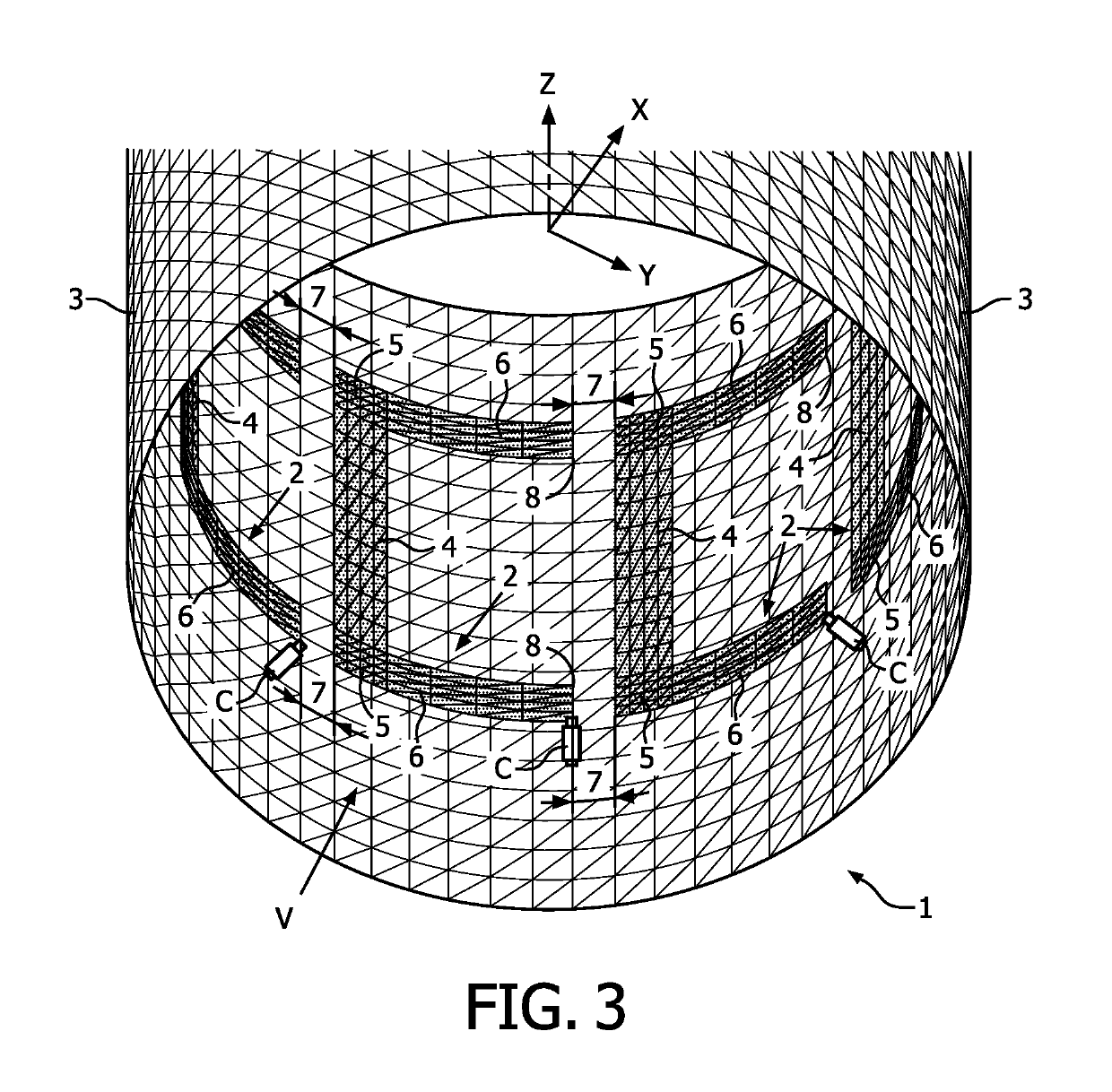Transverse-electromagnetic (TEM) radio-frequency coil for magnetic resonance
a radio-frequency coil and transverse-electromagnetic technology, applied in the field of magnetic resonance, can solve the problems of difficult definition and specification of rf cable connections, inability to provide reliable simulation basis of such devices, and inability to supply or feed rf power in qbc-based mr systems, etc., to achieve the effect of reducing image quality, reducing z-sensitivity, and reducing sensitivity
- Summary
- Abstract
- Description
- Claims
- Application Information
AI Technical Summary
Benefits of technology
Problems solved by technology
Method used
Image
Examples
Embodiment Construction
[0028]FIG. 1 shows a conventional transverse-electromagnetic (TEM) radio-frequency (RF) coil 1C for a magnetic resonance system, such as an MRI system. The conventional TEM coil 1C comprises a plurality of TEM coil elements 2 arranged within and encompassed by an RF shield 3 in the form of a cylindrical screen which functions as an RF ground for the coil 1C. A central axis of the cylindrical RF screen 3 corresponds to the z-axis of the coil 1C, as denoted by the Cartesian coordinates shown in FIG. 1. Each of the plurality of TEM coil elements 2 comprises an elongate coil strip section 4, and the TEM coil elements 2 are arranged such that the strip sections 4 are essentially parallel and spaced apart from one another at regular intervals around the z-axis inside the RF screen 3. Because the RF screen 3 in this example is circularly cylindrical, all of the strip sections 4 of the TEM coil elements 2 have basically the same radial spacing from the z-axis of the coil 1C. In this embodim...
PUM
 Login to View More
Login to View More Abstract
Description
Claims
Application Information
 Login to View More
Login to View More - R&D
- Intellectual Property
- Life Sciences
- Materials
- Tech Scout
- Unparalleled Data Quality
- Higher Quality Content
- 60% Fewer Hallucinations
Browse by: Latest US Patents, China's latest patents, Technical Efficacy Thesaurus, Application Domain, Technology Topic, Popular Technical Reports.
© 2025 PatSnap. All rights reserved.Legal|Privacy policy|Modern Slavery Act Transparency Statement|Sitemap|About US| Contact US: help@patsnap.com



